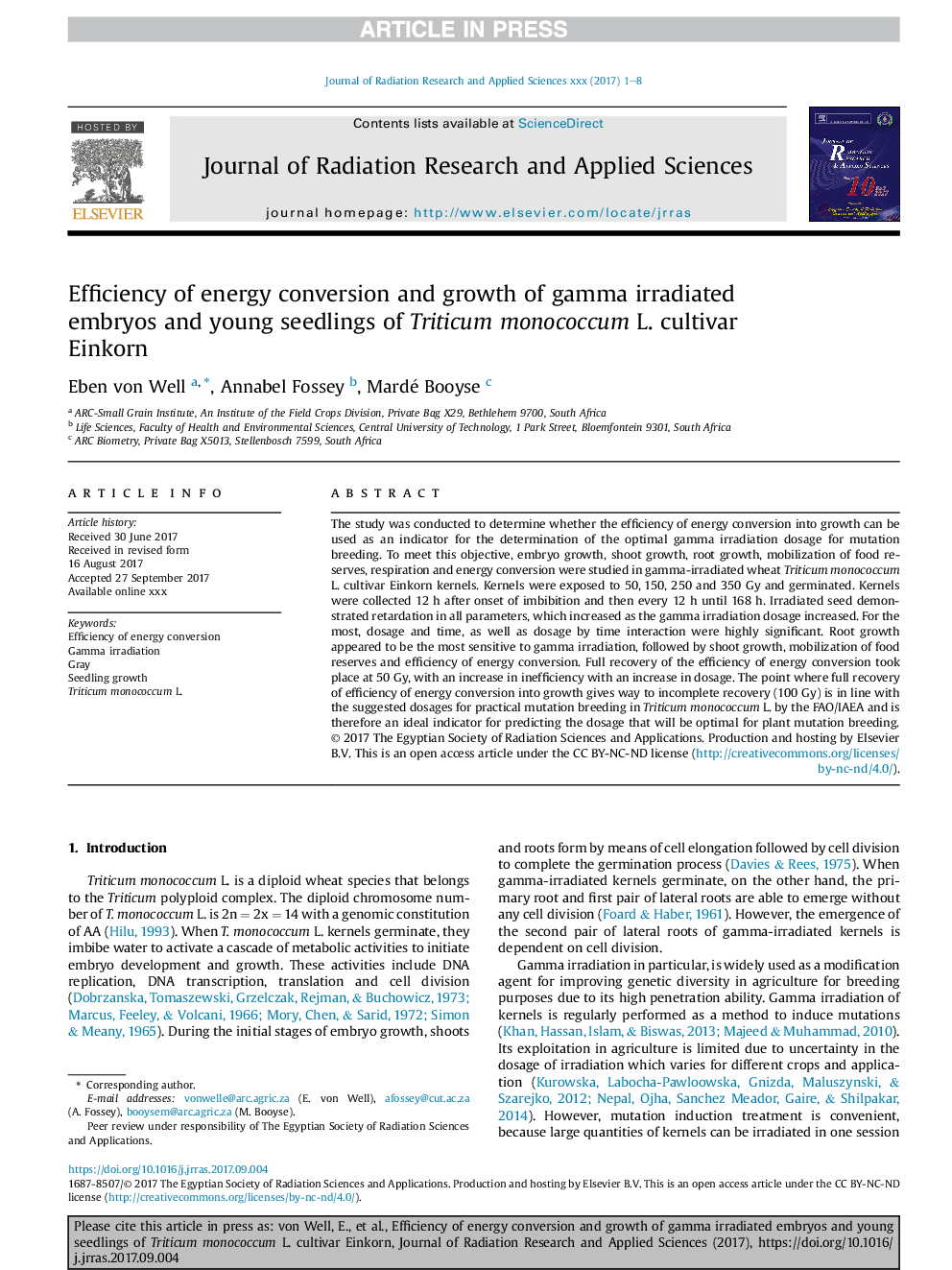| Article ID | Journal | Published Year | Pages | File Type |
|---|---|---|---|---|
| 7968886 | Journal of Radiation Research and Applied Sciences | 2018 | 8 Pages |
Abstract
The study was conducted to determine whether the efficiency of energy conversion into growth can be used as an indicator for the determination of the optimal gamma irradiation dosage for mutation breeding. To meet this objective, embryo growth, shoot growth, root growth, mobilization of food reserves, respiration and energy conversion were studied in gamma-irradiated wheat Triticum monococcum L. cultivar Einkorn kernels. Kernels were exposed to 50, 150, 250 and 350Â Gy and germinated. Kernels were collected 12Â h after onset of imbibition and then every 12Â h until 168Â h. Irradiated seed demonstrated retardation in all parameters, which increased as the gamma irradiation dosage increased. For the most, dosage and time, as well as dosage by time interaction were highly significant. Root growth appeared to be the most sensitive to gamma irradiation, followed by shoot growth, mobilization of food reserves and efficiency of energy conversion. Full recovery of the efficiency of energy conversion took place at 50Â Gy, with an increase in inefficiency with an increase in dosage. The point where full recovery of efficiency of energy conversion into growth gives way to incomplete recovery (100Â Gy) is in line with the suggested dosages for practical mutation breeding in Triticum monococcum L. by the FAO/IAEA and is therefore an ideal indicator for predicting the dosage that will be optimal for plant mutation breeding.
Keywords
Related Topics
Physical Sciences and Engineering
Materials Science
Materials Science (General)
Authors
Eben von Well, Annabel Fossey, Mardé Booyse,
